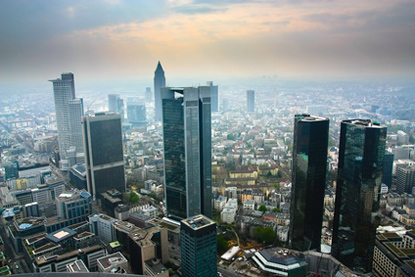 View from the Maintower in Frankfurt am Main.
View from the Maintower in Frankfurt am Main.
Introduction
Frankfurt am Main is the financial capital of Germany, the largest financial centre in continental Europe, as well as the seat of the European Central Bank and Bundesbank. With over 200 banks with registered offices, including the headquarters of the major German banks, the city has been nicknamed 'Bankfurt' or 'Mainhattan'.
Frankfurt is Germany's fifth largest city, while the greater Frankfurt Rhine-Main region (encompassing Wiesbaden, Mainz, Darmstadt and Aschaffenburg) is the country's second-largest metropolitan region, with 5.8 million inhabitants. Frankfurt Airport is the main hub of Lufthansa, and is one of the world's busiest international airports. Frankfurt Central Station one of the largest terminal stations in Europe, with 350,000 passengers per day.
Attractions
The Messe Frankfurt is the third largest trade fair in the world, hosting notably the world's largest motor show, book fair and music fair.
Completed destroyed in WWII, Frankfurt has few outstanding historical buildings besides its Gothic cathedral, but make up for it with its glitzy skyscrapers and a rich collection of museums.
The city also boasts Germany's best nightlife scene after Berlin, and is famous for its dance and techno music nightclubs.
 Skyscrapers of Frankfurt am Main.
Skyscrapers of Frankfurt am Main.
Travel Community
Ask your travel questions on the Germany Travel Forum